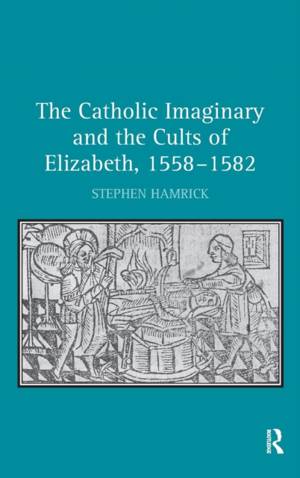
Je cadeautjes zeker op tijd in huis hebben voor de feestdagen? Kom langs in onze winkels en vind het perfecte geschenk!
- Afhalen na 1 uur in een winkel met voorraad
- Gratis thuislevering in België vanaf € 30
- Ruim aanbod met 7 miljoen producten
Je cadeautjes zeker op tijd in huis hebben voor de feestdagen? Kom langs in onze winkels en vind het perfecte geschenk!
- Afhalen na 1 uur in een winkel met voorraad
- Gratis thuislevering in België vanaf € 30
- Ruim aanbod met 7 miljoen producten
Zoeken
€ 305,45
+ 610 punten
Uitvoering
Omschrijving
Stephen Hamrick demonstrates how poets writing in the first part of Elizabeth I's reign proved instrumental in transferring Catholic worldviews and paradigms to the cults and early anti-cults of Elizabeth. Stephen Hamrick provides a detailed analysis of poets who used Petrarchan poetry to transform many forms of Catholic piety, ranging from confession and transubstantiation to sacred scriptures and liturgical singing, into a multivocal discourse used to fashion, refashion, and contest strategic political, religious, and courtly identities for the Queen and for other Court patrons. These poets, writers previously overlooked in many studies of Tudor culture, include Barnabe Googe, George Gascoigne, and Thomas Watson. Stephen Hamrick here shows that the nature of the religious reformations in Tudor England provided the necessary contexts required for Petrarchanism to achieve its cultural centrality and artistic complexity. This study makes a strong contribution to our understanding of the complex interaction among Catholicism, Petrachanism, and the second English Reformation.
Specificaties
Betrokkenen
- Auteur(s):
- Uitgeverij:
Inhoud
- Aantal bladzijden:
- 240
- Taal:
- Engels
Eigenschappen
- Productcode (EAN):
- 9780754665885
- Verschijningsdatum:
- 10/02/2009
- Uitvoering:
- Hardcover
- Formaat:
- Genaaid
- Afmetingen:
- 156 mm x 234 mm
- Gewicht:
- 512 g

Alleen bij Standaard Boekhandel
+ 610 punten op je klantenkaart van Standaard Boekhandel
Beoordelingen
We publiceren alleen reviews die voldoen aan de voorwaarden voor reviews. Bekijk onze voorwaarden voor reviews.









